Name Ching Shih Role Pirate | Died 1844, Guangzhou, China Spouse Cheung Po Tsai | |
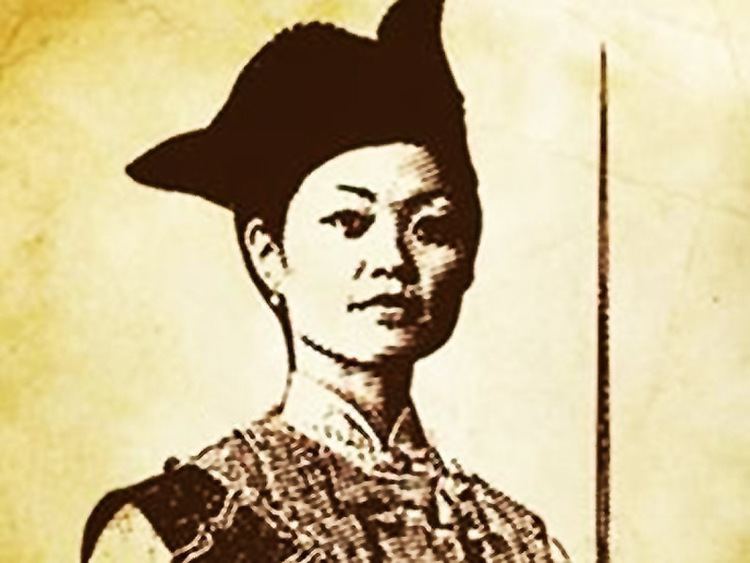 | ||
Similar People Cheng I, Jorge Luis Borges, Jun Ichikawa | ||
Plunder pirates 23 ching shih new legendary pirate
Madame Ching or Ching Shih (1775–1844) (simplified Chinese: 郑氏; traditional Chinese: 鄭氏; pinyin: Zhèng Shì; Cantonese: Jehng Sih; "widow of Zheng"), also known as Cheng I Sao (simplified Chinese: 郑一嫂; traditional Chinese: 鄭一嫂; "wife of Zheng Yi"), was a prominent pirate in middle Qing China, who terrorized the China Sea in the early 19th century. She personally commanded over 300 junks manned by 20,000 to 40,000 pirates—men, women, and even children. She entered into conflict with the existing empires of the time, such as the British Empire, the Portuguese Empire, and the Qing dynasty. She was one of the few pirate captains to retire from piracy and is considered to be the most successful pirate in history.
Contents
- Plunder pirates 23 ching shih new legendary pirate
- Plunder pirates hiring ching shih
- Early life
- Marriage to Cheng I
- Ascension to leadership
- Relationship with Cheung Po Tsai
- Code of laws
- Career
- References
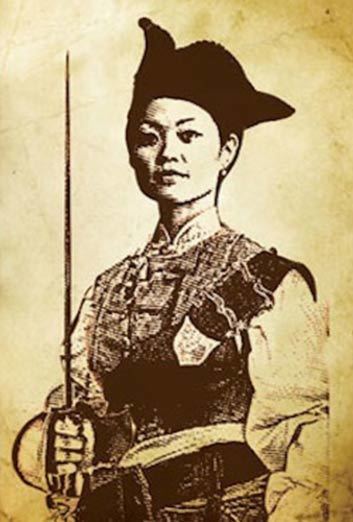
Ching Shih has been featured in numerous books, novels, video games, and films in Asia.
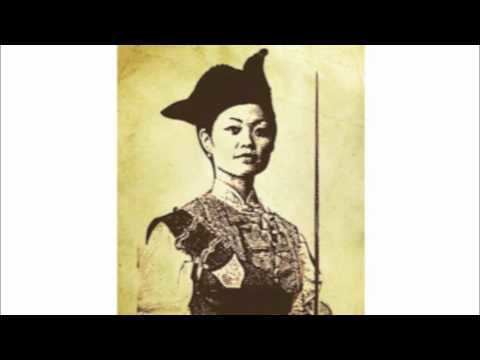
Plunder pirates hiring ching shih
Early life

She was born Shi Xianggu (Chinese: 石香姑; Jyutping: sek6 hoeng1 gu1, IPA: [sɛk˨ hœŋ˥ ku˥]) in 1775 in Guangdong. She was a Cantonese prostitute who worked in a small brothel in Guangzhou, but was captured by pirates. In 1801, she married Cheng I, a notorious pirate. The name she is best remembered by simply means "Cheng's widow".
Marriage to Cheng I

Cheng I belonged to a family of successful pirates who traced their criminal origins back to the mid-seventeenth century. Following his marriage to Ching Shih, "who participated fully in her husband's piracy", Cheng I used military assertion and his reputation to consolidate a coalition of competing Cantonese pirate fleets into an alliance. By 1804, this coalition was a formidable force, and one of the most powerful pirate fleets in all of China; by this time they were known as the Red Flag Fleet.
Ascension to leadership
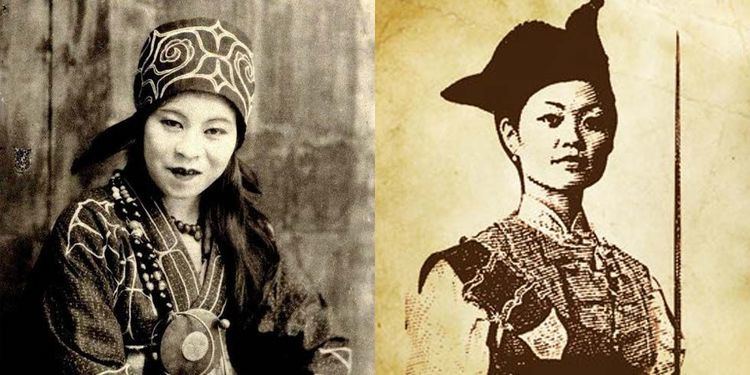
On 16 November 1807, Cheng I died in Vietnam. Ching Shih immediately began maneuvering her way into his leadership position. She started to cultivate personal relationships to get rivals to recognize her status and solidify her authority. In order to stop her rivals before open conflict erupted, she sought the support of the most powerful members of her husband's family: his nephew Cheng Pao-yang and his cousin's son Cheng Ch'i. Then she drew on the coalition formed by her husband by building upon some of the fleet captains' existing loyalties to her husband and making herself essential to the remaining captains.
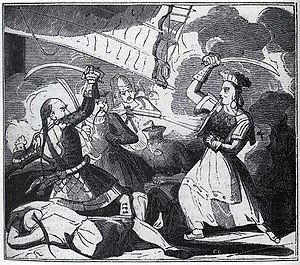
Since Ching Shih would have such a large force at her command, she knew she needed someone to assist her in managing the Red Flag Fleet's day-to-day operations, but remain loyal to her and be accepted by the low-level pirates. She believed there was only one man for the job, Cheung Po Tsai.
Relationship with Cheung Po Tsai
Cheung Po Tsai was the son of a fisherman and had been impressed into piracy at age 15, when he was captured by Cheng I. Cheung rose rapidly through the ranks and was eventually adopted by Cheng I to give him the rights of a son and heir.
As soon as Ching Shih chose Cheung, she acted quickly to solidify the partnership with intimacy. The two became lovers within weeks and eventually married. Ching Shih gave birth to Cheung's son sometime between the age of 32 and 35. Cheung Po Tsai died at 36 of unknown causes.
Code of laws
Once she held the fleet's leadership position, Ching Shih started the task of uniting the fleet by issuing a code of laws. The Neumann translation of The History of Pirates Who Infested the China Sea claims that it was Cheung Po Tsai that issued the code. Yuan Yung-lun says that Cheung issued his own code of three regulations, called san-t'iao, for his own fleet, but these are not known to exist in a written form. The code was very strict and according to Richard Glasspoole, strictly enforced.
First, anyone giving their own orders (ones that did not come down from Ching Shih) or disobeying those of a superior was beheaded on the spot.
Second, no one was to steal from the public fund or any villagers that supplied the pirates.
Third, all goods taken as booty had to be presented for group inspection. The booty was registered by a purser and then distributed by the fleet leader. The original seizer received twenty percent and the rest was placed into the public fund.
Fourth, actual money was turned over to the squadron leader, who only gave a small amount back to the seizer, so the rest could be used to purchase supplies for unsuccessful ships. According to Philip Maughan, the punishment for a first-time offense of withholding booty was severe whipping of the back. Large amounts of withheld treasure or subsequent offenses carried the death penalty.
Ching Shih's code had special rules for female captives. Standard practice was to release women, but J.L. Turner witnessed differently. Usually the pirates made their most beautiful captives their concubines or wives. If a pirate took a wife he had to be faithful to her. The ones deemed unattractive were released and any remaining were ransomed. Pirates that raped female captives were put to death, but if pirates had consensual sex with captives, the pirate was beheaded and the woman he was with had cannonballs attached to her legs and was thrown over the side of the boat.
Violations of other parts of the code were punished with flogging, clapping in irons, or quartering. Deserters or those who had left without official permission had their ears chopped off, and then were paraded around their squadron. Glasspoole concluded that the code "gave rise to a force that was intrepid in attack, desperate in defense, and unyielding even when outnumbered."
Career
The fleet under her command established hegemony over many coastal villages, in some cases even imposing levies and taxes on settlements. According to Robert Antony, Ching Shih "robbed towns, markets, and villages, from Macau to Canton."
The Red Flag Fleet under Ching Shih's rule could not be defeated—by neither Qing dynasty Chinese officials nor Portuguese and British bounty hunters. She even captured Richard Glasspoole, an officer of the East India Company ship The Marquis of Ely, and seven British sailors in 1809.
Finally, in late 1809 and early 1810, her fleet suffered a series of defeats inflicted by the Portuguese Navy at the Battle of the Tiger's Mouth, upon which she accepted an amnesty offered by the Chinese government to all pirates who agreed to surrender, ending her career that same year. She kept her loot and opened a gambling house.
She died in 1844, at the age of 69.
